Note: This website was automatically translated, so some terms or nuances may not be completely accurate.
Interview with Akio Shimazu, Secretary General of the Organizing Committee Hosting the Rugby World Cup 2019 in Japan

Akira Shimazu

The Rugby World Cup 2015, which saw tremendous excitement fueled by the remarkable performance of the Japanese national team, was a rugby festival held in England. Now, four years later, it is finally coming to Japan. Ahead of this first-ever hosting in Asia, we spoke with Mr. Akira Shimazu, Secretary General of the tournament's organizing committee, about his outlook for 2019.
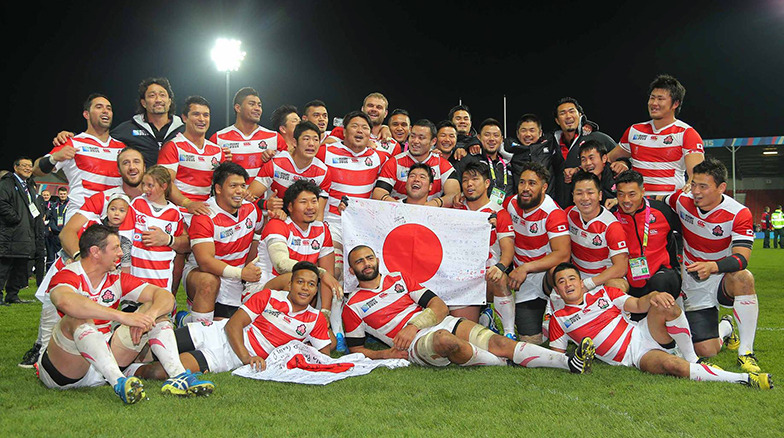
Impressed by fans who savored not just the matches, but the time and atmosphere
──The Japan national team made a huge leap forward at Rugby World Cup 2015. Please share your reflections on that and your thoughts on the tournament's operation.
Shimazu: The Japan team's performance was outstanding. Beating South Africa, one of the favorites to win, was truly astonishing. Their aggressive attitude, aiming for victory right until the end, was also deeply moving. It was this process that earned them recognition, boosting the Japan team's popularity not just domestically but internationally too. Their selection for the Rugby World Cup's "Best Moment" award is a clear reflection of that. It's also very encouraging to see tickets selling well for the Top League (Japan's domestic rugby league) and other events.
During the tournament, I watched many matches on-site. What impressed me most was the atmosphere at the venues. Not only the supporters of the competing teams, but also the neutral fans in the middle ground were all enjoying themselves together. Looking into the background of this excitement, spectators were arriving at the venue two to three hours before the match. And it seems there was substantial sales revenue from food and drink at the stadium and its surroundings.
In other words, they weren't just watching the game; they were genuinely enjoying the time and space. That's precisely why the neutral fans got so excited. As a result, attendance reached a record high of 2.47 million people. Behind this attendance record was a system and hospitality designed to ensure enjoyment for many fans, including the neutral ones.
From north to south, across 12 venues, we want the whole of Japan to get excited
──The Japan tournament will be held across 12 cities nationwide. What are the keys to the tournament's success?
Shimazu: The 12 venues are spread evenly from north to south, aiming for nationwide excitement. Of course, many foreigners will visit Japan during the event period. We'd be delighted if this serves as an inbound measure to revitalize each region. Amidst this, the key to the event's success is precisely what I mentioned earlier: "the system and hospitality designed to ensure enjoyment." How thoroughly we can build these elements is crucial. Since the venues used for the Japan event are owned by local governments, it's essentially a co-hosting arrangement with them. We want to work hand-in-hand with these municipalities.
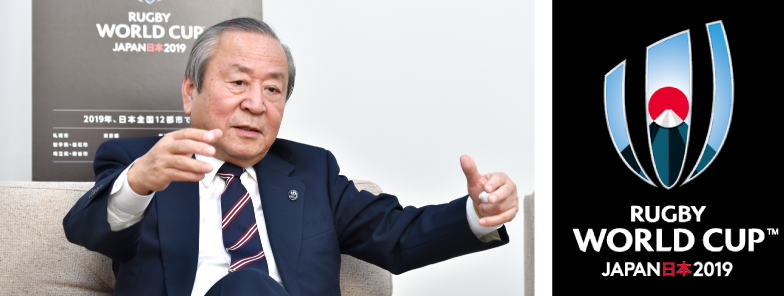
We expect corporate support in creating enjoyable experiences
──What do you expect from companies and media to ensure the Games' success?
Shimazu: Building systems and hospitality for enjoyment isn't easy. It's challenging for us organizers alone. That's why we really want companies to leverage their business expertise. It's not just about "watching the matches"; it's about creating mechanisms for enjoyment there. For that, business support is essential. For example, we'd like them to focus on new ways to enjoy public viewings and fan zones.
We also expect the media to play a role in building excitement. The Japan vs. Samoa match recorded an average high viewership rating of 19.3% (Video Research Ltd., Kanto region). We hope that increased broadcasts of Top League, university rugby, and international matches will further fuel the growing rugby fever.
Finally, phrases often heard in Japanese rugby like "No Side" and "One for All, All for One" are actually not very familiar overseas. They represent a uniquely Japanese rugby culture. Yet, it is precisely in these words that the spirit of Japanese hospitality resides. We want to use these as keywords to make the World Cup in four years a success.

The Rugby World Cup 2015 concluded on October 31st. During the tournament, the "Japan Pavilion" (organized by the Japan Rugby Football Union and Rugby World Cup 2019 Japan) was set up in London, the venue for the final and other matches, to introduce Japan to the world. Its purpose was to share Japanese culture, encourage people worldwide to develop an affinity for Japan, and invite them to the 2019 tournament in Japan. Numerous events were held, attracting many visitors.
Approximately 20 Days of "Japan Promotion" from Central London
The Japan Pavilion operated from October 9 to 31, during the latter half of the tournament. It was located at the Queen Elizabeth II Conference Centre (QEII). Divided into phases, the event featured both indoor facilities and a specially constructed outdoor venue on the lawn. It promoted the appeal of Japanese culture, including the upcoming 2019 tournament in Japan and Japanese cuisine, while highlighting the value of visiting Japan as a tourist destination.
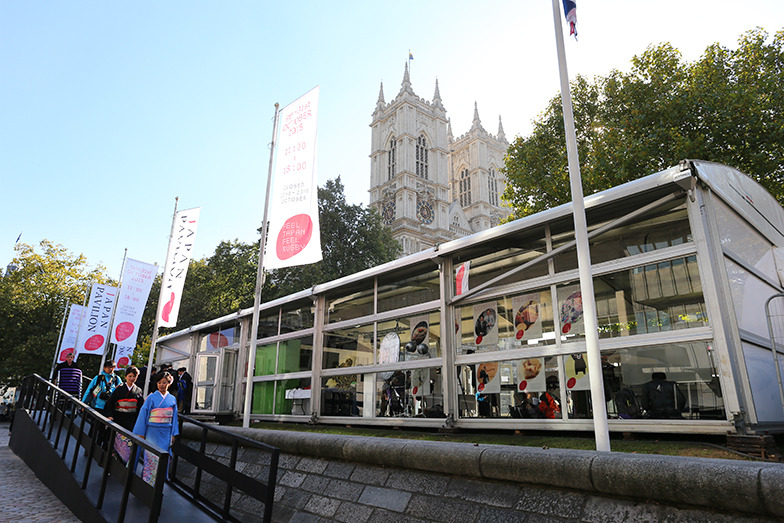
Expressing Rugby's Power Through Japanese Anime
The Japan Pavilion's slogan was "Feel Japan Feel Rugby." As part of this, a concept video using the internationally popular anime "Fist of the North Star: Strawberry Flavor" was screened. A large LED display was installed at the special venue, using animation to express the intensity of rugby's physical contact.
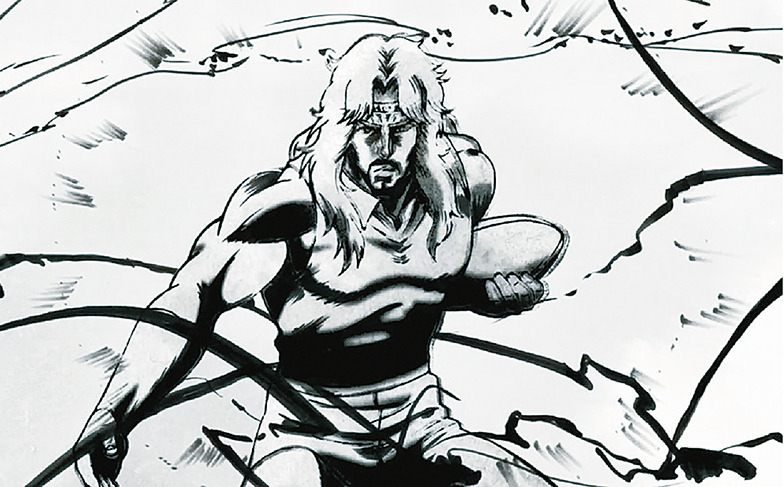
Sharing Japan's Rugby History in the Birthplace of the Sport
Inside the Queen Elizabeth II, an exhibition titled "History of JAPAN RUGBY" introduced the history of Japanese rugby. It displayed the origins of rugby's introduction from Britain approximately 140 years ago, a timeline, and valuable artifacts including the oldest Japanese national team jersey.

Panels filled with Japanese design displayed together
The special venue featured panels under the theme "Feel Japan Feel Rugby." Approximately 40 panels were displayed, featuring motifs representing Japanese culture and landscapes such as ukiyo-e and cherry blossoms. Each panel included explanatory text to enhance cultural understanding.
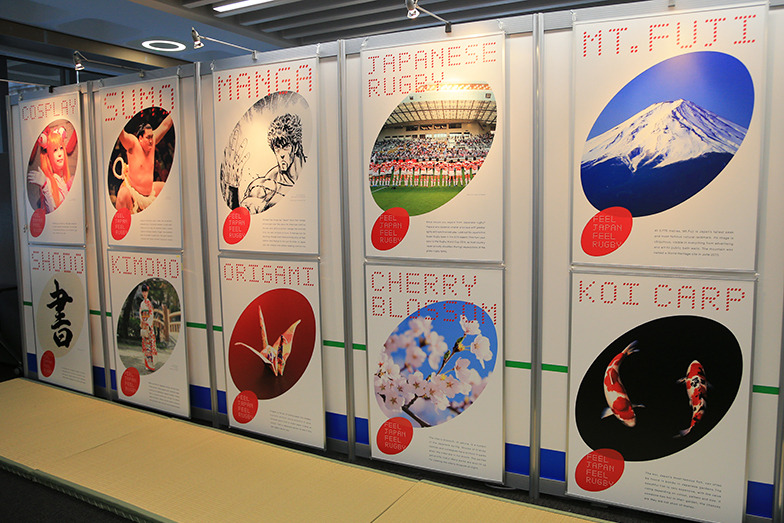
Rugby interactive content also popular
Hands-on experiences were offered during the event. One involved participants holding a rugby ball and attempting a try against a wall, captured by a camera. The resulting photo, rotated to look like an actual match try, was presented to participants as a souvenir.
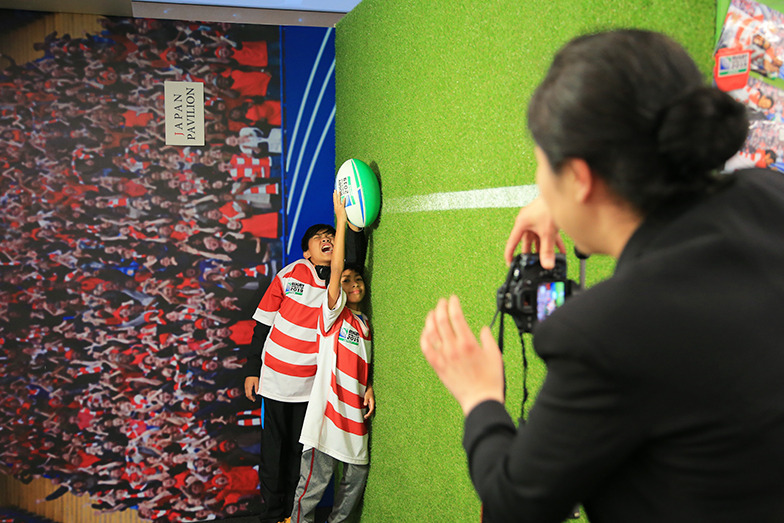
Was this article helpful?
Newsletter registration is here
We select and publish important news every day
For inquiries about this article
Author

Akira Shimazu
Rugby World Cup 2019 Organizing Committee Secretary General
Served as Vice-Minister of Internal Affairs and Communications and Secretary-General of the National Governors' Association. In March 2014, he was appointed Secretary-General of the Rugby World Cup 2019 Organizing Committee.